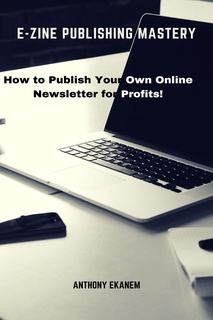«E-Zine Publishing Mastery: How to Publish Your Own Online Newsletter for Profits!» by Anthony Ekanem
English | ISBN: 9783958498891 | EPUB | 0.1 MB
English | ISBN: 9783958498891 | EPUB | 0.1 MB
E-zine publishing is an online magazine. Much like in real life, it is simply a magazine that is delivered in a digital form. Most of the E-zines today are targeted towards Internet distribution and is meant to promote a website. Normally, an E-zine usually caters to a particular niche or topic. It could be anything from 'How to make money online' to 'How to train your pet'. E-zines are distributed to their subscribers normally through e-mail. Normally people send E-zines to be published on a consistent, pre-planned basis. For example, an e-mail will be sent out every day, every three days, weekly, biweekly or monthly.
These E-zines are distributed using an autoresponder. An autoresponder is programmed for every subscriber to receive the e-mails in a chronological format in a sequential order. This is the biggest difference between an E-zine and its offline counterpart. An E-zine can send previous issues anytime regardless of when the subscriber has opted in to the E-zine. The autoresponder will do its job of follow-up from the day the subscriber has opted in and will follow through until its 'run' is exhausted.
Today, the majority of E-zines are website driven. It would be a surprising fact to know that the first E-zines were delivered on an electronic format such as CD-ROM and delivered to the subscriber's house by mail. That was in the 'stone age' when the power of e-mails and autoresponders were not realized yet. But now, the majority of the formats stick with e-mails or they send out notifications (or updates) in conjunction with websites or blogs. The e-mail usually contains the issue itself or a summarized format that ultimately links back to the original website for the main cheese.



